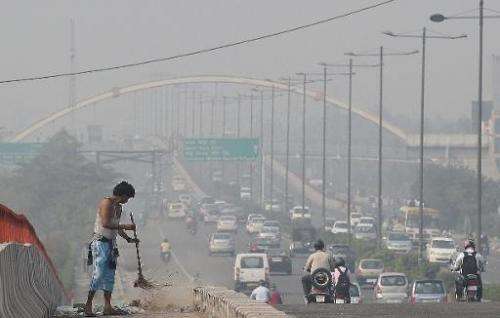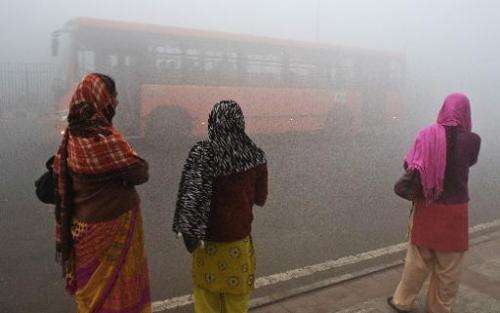Concern over India plan to stop publishing smog data

Environmental activists expressed concern Wednesday after Indian authorities said they would stop releasing raw air pollution figures for New Delhi, the world's most polluted city.
Three separate government agencies currently compile data from air monitoring stations in the capital, and each publishes the figures directly.
The government said late Tuesday the data should in future be sent to the Central Pollution Control Board for analysis before it could be released in order to provide "authentic air quality information to people of Delhi".
It did not give a reason for the move, but several environment campaigners expressed concerns the new system, which comes into effect in the next two weeks, was a way for the government to bury bad news.
"The move in general is pretty worrying for me. I don't understand what it would mean for (the) pollution control board to edit data before it is released," Greenpeace India's air pollution campaigner Aishwarya Madineni told AFP.
"People have to know it because it affects their health."
Hem Dholakia, research associate with the Council on Energy, Environment and Water in New Delhi, said the move appeared to go against transparency.
"If there are real-time monitors, the data doesn't need any validation," he told AFP.

"They should give out more information explaining their decision, without which it sounds a little fishy."
India's government is under intense pressure over air pollution after a World Health Organization study of 1,600 cities released last year showed Delhi had the world's highest annual average concentration of small airborne particles known as PM2.5.
These extremely fine particles of less than 2.5 micrometres in diameter are linked with increased rates of chronic bronchitis, lung cancer and heart disease as they penetrate deep into the lungs and can pass into the bloodstream.
The small particles blighting the air of New Delhi and other major developing cities around the world are often dust from construction sites, pollution from diesel engines or industrial emissions.
India disputed the WHO's assertion, but has conceded that air pollution in the capital is comparable with that of Beijing.
The government has yet to announce any major moves to tackle the issue, although policymakers have suggested restrictions on private vehicles, higher pollution-related taxes and stricter enforcement of urban planning laws.
© 2015 AFP

















